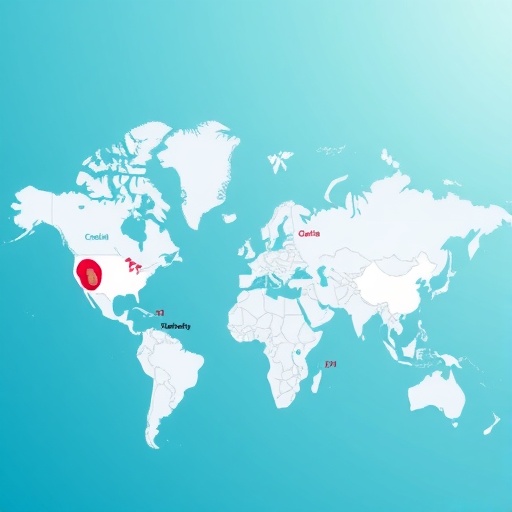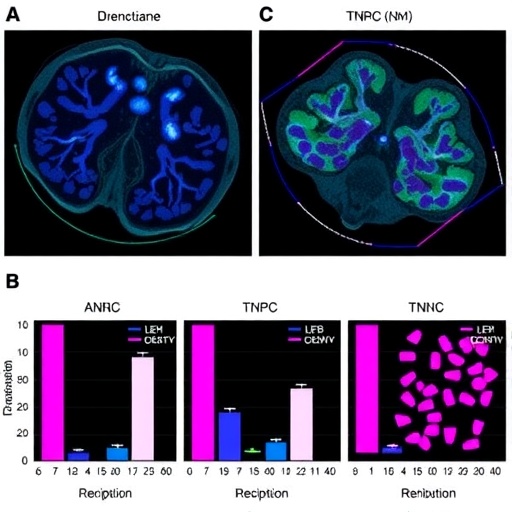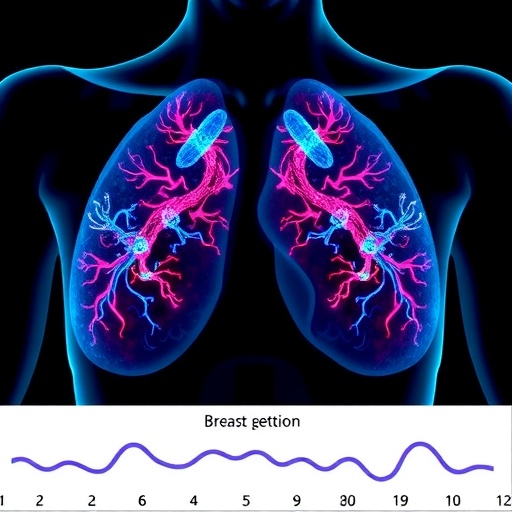The global landscape of kidney cancer presents a complex tapestry of epidemiological shifts and regional disparities, underscoring the critical importance of ongoing surveillance and targeted public health interventions. Recent comprehensive analyses have elucidated the evolving burden of kidney cancer from 1990 through 2021, offering not only a reflection on past trends but also a predictive gaze into its future trajectories. This extensive examination leveraged data collected on incidence, mortality, prevalence, and disability-adjusted life years (DALYs), underpinned by rigorous statistical modeling to demystify patterns and forecast forthcoming challenges.
Kidney cancer, known medically as renal cell carcinoma among other histological subtypes, exhibits significant heterogeneity worldwide. Globally, its incidence rose dramatically over the three-decade period, nearly doubling from approximately 160,000 reported cases in 1990 to nearly 390,000 in 2021. This upward surge signals an alarming public health threat that transcends geographic and socioeconomic boundaries. Of particular note is the staggering number of cases emerging from populous nations such as China, which accounts for the highest absolute number of kidney cancer patients alongside substantial mortality and disability burdens.
Analysis reveals that China’s dominant figures in the epidemiological data are closely followed by the United States, where kidney cancer similarly imposes significant health system strain. However, it is not only the sheer volume of cases that demands scrutiny but the rate at which these events increase, adjusted for age-standardization, that better informs public health priorities. This differential metric unveils intriguing nuances: while some regions experience rapid increases in age-standardized rates (ASRs), others enjoy stability or even declines, indicative of successful mitigation or differing risk exposures.
Among countries, Cabo Verde exhibits the fastest increases in ASRs, representing a concerning trend in less developed areas that might lack robust cancer control infrastructure. Contrastingly, Southern Latin America stands out as the region with the highest ASRs overall, implying a concentration of risk factors demanding urgent attention. These regional disparities suggest an interplay of environmental, genetic, and lifestyle determinants that compound the burden of kidney malignancies.
A particularly salient finding from this detailed investigation is the observation that nearly fifty countries, mainly located in Western Europe and North America, have realized decreasing mortality ASRs over recent decades. Such downward trends reflect advancements in early detection, medical technology, and treatment modalities, as well as the effectiveness of public health campaigns. Nevertheless, the persistence of rising incidence and prevalence in other parts of the world calls for a reassessment of global strategies to address this growing oncological challenge.
At the crux of these epidemiological trends lies the sociodemographic index (SDI), a composite measure reflecting development across income, education, and fertility rates. There exists a direct correlation wherein kidney cancer burden escalates alongside higher SDI levels, signifying that as nations progress socioeconomically, changes in lifestyle and environmental exposures may influence carcinogenic risk. This phenomenon warrants nuanced understanding, as improvements in life expectancy and healthcare access could paradoxically reveal or exacerbate the burden of chronic diseases including kidney cancer.
Methodologically, the study employed both age-period-cohort (APC) and Bayesian age-period-cohort (BAPC) models to dissect and predict the evolving kidney cancer landscape. These sophisticated statistical tools parse temporal trends considering the effects of a person’s birth cohort, the period of data collection, and age at diagnosis, enabling refined forecasts. Utilizing these approaches, researchers projected a gradual decline in ASRs of incidence, prevalence, mortality, and DALYs associated with kidney cancer over the next two decades, a cautiously optimistic outlook suggesting that ongoing public health efforts may yield dividends.
The identification of risk factors furnishes critical insights into etiological underpinnings. Notably, high body mass index (BMI) and tobacco smoking emerged as principal contributors to the global kidney cancer burden. Intriguingly, the influence of elevated BMI is especially prominent in countries with lower SDI, highlighting the shifting epidemiology of obesity-related cancers into regions previously less affected. This transition portends a future wherein non-communicable disease risks intersect with under-resourced health systems, necessitating integrative preventive strategies.
The role of smoking as a well-established carcinogenic agent remains unequivocal, reinforcing the imperative for anti-tobacco policies in cancer prevention frameworks. Given that smoking rates vary widely across regions, tailored interventions are paramount to addressing local behavioral patterns. The synergistic impact of smoking and elevated BMI magnifies risk, further underpinning the need for multi-modal public health campaigns that address lifestyle modification from varied sociocultural angles.
In parallel, the study’s data underscore how global aging trends bring additional complexity to kidney cancer burden assessments. As populations worldwide age, the absolute number of cases and associated health care demands are likely to intensify, despite potential decreases in age-standardized rates. Aging confers cumulative exposure to carcinogens and comorbidities that can influence disease severity and treatment outcomes, emphasizing the necessity of geriatric oncology expertise and resource allocation.
These findings charge policymakers and healthcare practitioners with the dual responsibility of mitigating existing risk factors while preparing for demographic shifts that could amplify disease burdens. Policy interventions promoting healthy weight, smoking cessation, and early cancer detection stand as pillars to curb the ascendant trajectory of kidney cancer. Resource-limited settings, facing entrenched challenges, must be prioritized to prevent widening health inequities.
Moreover, the study’s use of global burden of disease (GBD) data enriches the epidemiological context, enabling comparisons across diverse populations and health systems. The granularity achieved through combining incidence, mortality, prevalence, and DALYs provides a multifaceted portrait that captures both the acute and chronic impacts of kidney cancer. It also facilitates the appraisal of interventions over time, informing evidence-based adjustments.
In conclusion, this comprehensive analysis illuminates kidney cancer as a significant and evolving global health threat with stark variability across regions and socioeconomic groups. The integration of advanced modeling frameworks and extensive datasets affords an unprecedented understanding of past, present, and future trends. While projections hint at potential improvements, the persistent high burden necessitates sustained commitment to risk reduction, healthcare infrastructure strengthening, and research innovation.
As the global community grapples with shifting disease landscapes in an era marked by demographic transitions and lifestyle changes, the findings serve as a clarion call. Implementing informed, multifaceted strategies holds promise for alleviating the kidney cancer burden, improving patient outcomes, and optimizing resource utilization worldwide. This endeavor aligns with broader aims to confront non-communicable diseases systematically, thereby advancing global health agendas into the coming decades.
Subject of Research: Global and regional epidemiology and future projections of kidney cancer burden, analyzed through global burden of disease data and advanced age-period-cohort modeling.
Article Title: Global and regional burden of kidney cancer from 1990 to 2021: analysis and future predictions based on global burden of disease study.
Article References:
Li, D., Zhao, H., Fan, S. et al. Global and regional burden of kidney cancer from 1990 to 2021: analysis and future predictions based on global burden of disease study. BMC Cancer 25, 1661 (2025). https://doi.org/10.1186/s12885-025-15130-8
Image Credits: Scienmag.com
DOI: https://doi.org/10.1186/s12885-025-15130-8
Tags: burden of kidney cancer in Chinadisability-adjusted life years in kidney cancerglobal epidemiology of kidney cancerhealthcare challenges in kidney cancer treatmenthistorical trends in kidney cancer incidenceincidence and mortality rates of kidney cancerkidney cancer prevalence in the United Stateskidney cancer trendspredictive modeling in cancer epidemiologypublic health interventions for kidney cancerregional disparities in kidney cancerrenal cell carcinoma statistics





